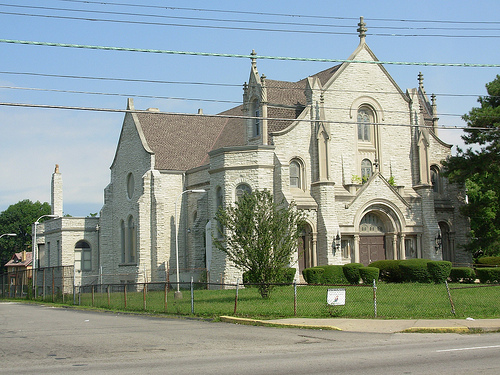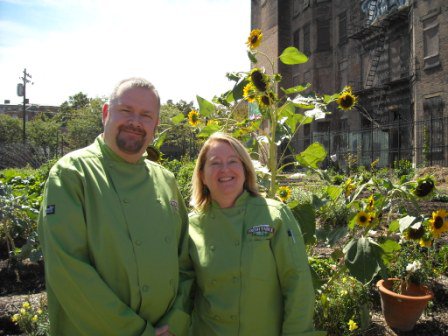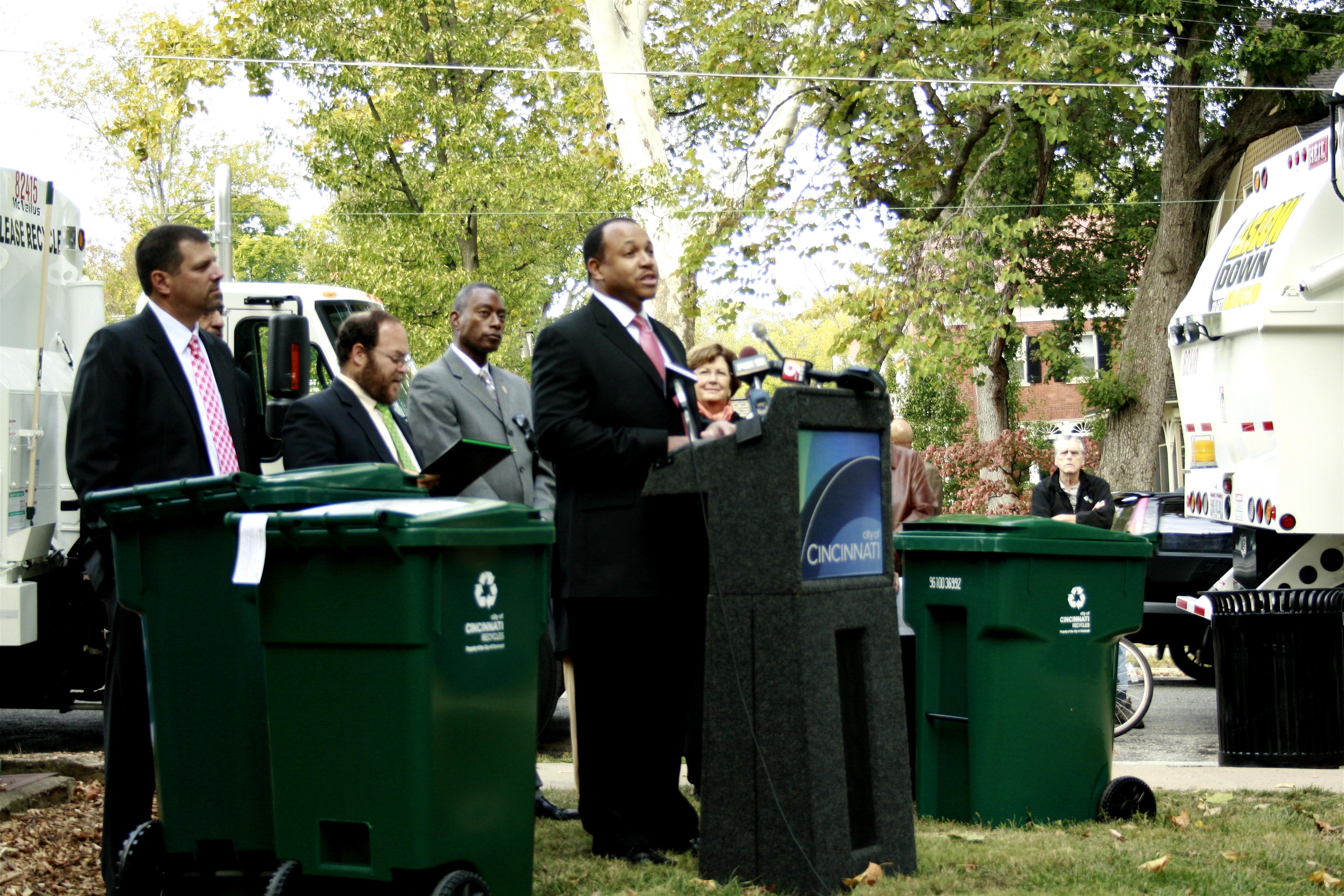Last year’s most dangerous neighborhood study from Walletpop.com caused a large stir in the local media when they announced that a portion of Over-the-Rhine was “the most dangerous neighborhood in America.” Following that proclamation, UrbanCincy analyzed the data and released its own response to what appeared to be a suspect report.
In determining these sensational classifications, Walletpop.com used individual census tracts to define the subject neighborhoods rather than using customary neighborhood boundaries. Cincinnatians most often know Over-the-Rhine as the area roughly bounded by Central Parkway to the south and west, the base of the hill to uptown to the north, and the Broadway Commons area to the east. This area is made up of census tracts 9 (southwest), 10 (southeast), 16 (northwest), and 17 (northeast) which make up the four quadrants of the neighborhood as we know it. But in Walletpop.com’s report, they use just a selected portion of the neighborhood which then end up labeling the “Moore Street” neighborhood.
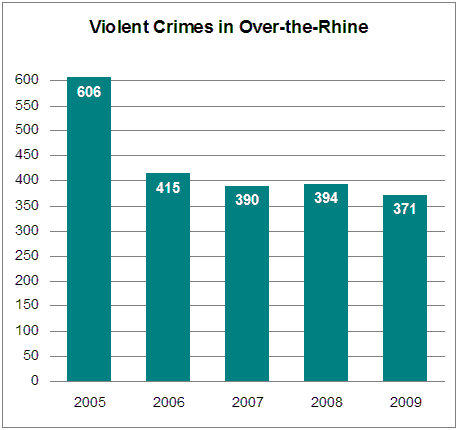
In 2009, the report looked at the northwest portion of OTR, and part of the West End, and labeled it as the “most dangerous in the country.” The 2010 report changes that analysis. The northwest portion of OTR has fallen off of the list of most dangerous neighborhoods completely, but they have included the northeast portion of OTR as the 24th most dangerous.
As with 2009’s report, there are inconsistencies with the data surrounding this portion of OTR in Walletpop.com’s most recent report.
Firstly, the report overstates the number of predicted crimes by 35 percent, in Census Tract 17, by predicting there will be 150 violent crimes in this part of the neighborhood. This would equate to the approximately 81.92 crimes per 1,000 residents Walletpop.com reports for the area. The reality is a bit different though. The population of the northeast portion of OTR is 1,358, and when multiplied by the ‘per 1,000 rate,’ there would only be 111 crimes per year, not the 150 predicted by Walletpop.com.
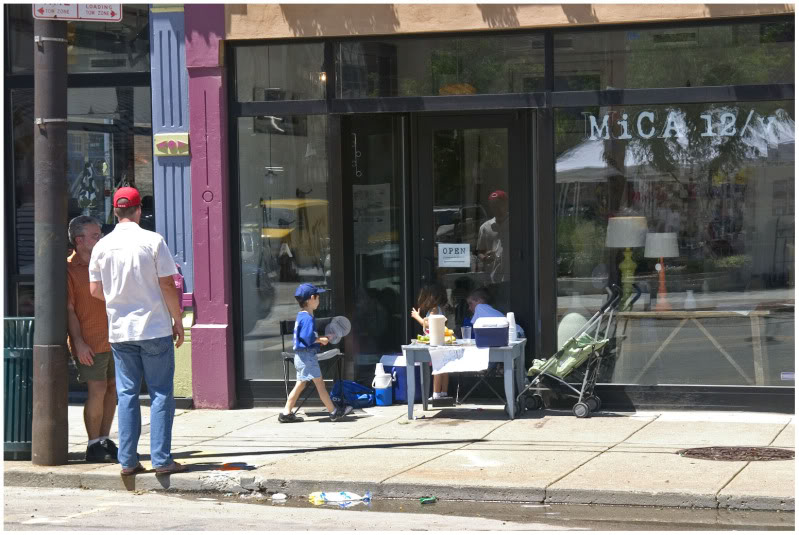
When studying last year’s report similar inconsistencies were found. In 2009 the report predicted 457 violent crimes in northwest OTR at a rate of 266.94 violent crimes per 1,000 residents. This number is particularly alarming as there is no possibility of 457 violent crimes in northwest OTR alone as the entire four census tract neighborhood had only 390 violent crimes in 2007. So in order for Walletpop.com’s analysis to be true, 100 percent of the violent crimes occurring in the entire Over-the-Rhine neighborhood would have to occur within this subject area, in addition to 50 percent of all the violent crimes that took place in the entire West End of which only a tiny portion is included in their analysis.
This year’s data only seems to confirm our suspicion that last year’s results were wildly inaccurate.
Northwest OTR is no longer listed as one of the top 25 most dangerous neighborhoods in the country. In the 2010 report, the 25th most dangerous neighborhood had a crime rate of 79.83 per 1,000 residents. If northwest OTR is not on this list, then the number of crimes in that portion of OTR must have fallen from 457 crimes to 138 crimes and the crime rate must have fallen to at least 79.82 per 1,000 residents—a decrease of 70 percent.
However, violent crime throughout the entire Over-the-Rhine neighborhood actually fell only 5.8 percent over the past year. If there were to be a 70 percent drop in crime in northwest OTR, but only a 5.8 percent drop in the neighborhood as a whole, then crime must have dramatically spiked in the rest of the neighborhood. With the massive amounts of investment being made in southwest and southeast OTR this seems highly unlikely. Main, Vine, and Race streets all have new shops and new residents, and each weekend scores of Cincinnatians are taking walking tours through the neighborhood.
Walletpop.com has, once again, overstated the number of crimes in portions Over-the-Rhine. Unless this site can refine its data, the mainstream media should be hesitant to give any credit to these reports. Doing otherwise comes across as lazy journalism and irresponsible reporting to its audience.
Instead of relying on data from websites trying to drive traffic, we should examine the data produced by the Cincinnati Police Department and U.S. Census Bureau. If you use their data, Over-the-Rhine, with a population of 6,497 and 371 crimes, has a rate of 57.1 per 1,000 residents and would not make the list of the 25 most dangerous neighborhoods. This legitimate data also indicates that Over-the-Rhine has seen crime decline 38.7 percent since redevelopment efforts began in earnest in 2005.
There is much work still to be done, but it is time to start focusing on our successes and not just our failures. And it is up to our local media to investigate these issues before they haphazardly report on this phony data.
Brad Thomas kindly contributed the data analysis for this story.
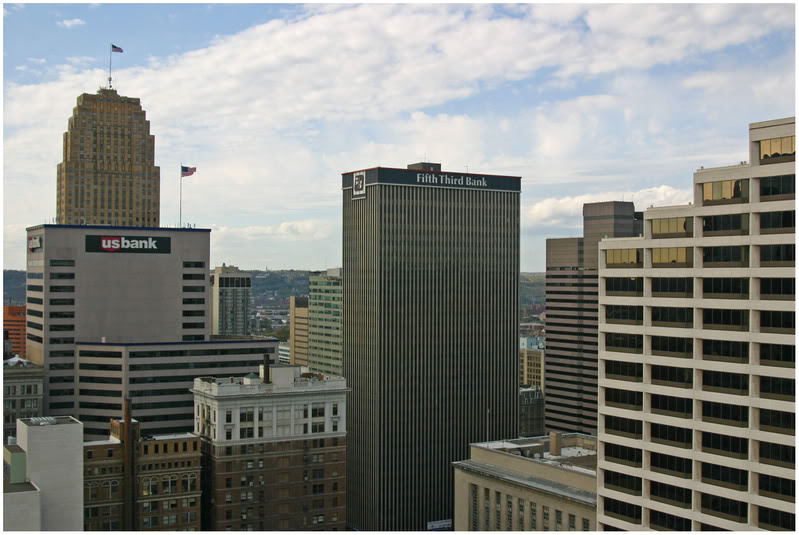 City leaders are looking to gather public opinion about how Cincinnati performs economically. In two concurrent surveys the city is asking residents and business owners about the economic climate here, and what can be done to improve that climate.
City leaders are looking to gather public opinion about how Cincinnati performs economically. In two concurrent surveys the city is asking residents and business owners about the economic climate here, and what can be done to improve that climate.
